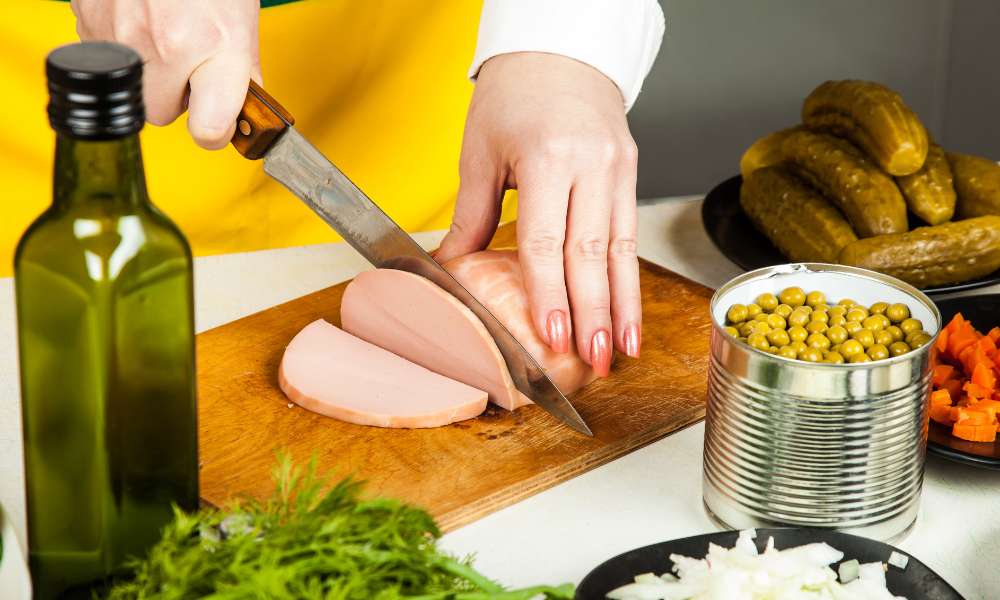When it comes to cutting with a knife, there are a few basic tips that will help you get the most out of your kitchen skills. First and foremost, always use a sharp knife; even if it means having to sharpen it yourself from time to time. Secondly, keep your hand steady while you’re cutting; don’t try to hurry the process by flailing around.
Knife skills are essential for any kitchen. Whether you’re preparing a simple meal or tackling a more complex dish, knowing how to cut with a knife is key. In this guide, we’ll teach you the basics of knife cutting and show you how to get the most out of your knives.
Knife Safety

When it comes to cutting with knives, safety is key. Here are a few tips to help keep you safe when wielding a knife: Always use proper knife safety equipment, such as safety goggles and a properly fitting sheath. Keep your hands well-positioned when cutting – keep your fingers away from the blade and hold the knife at an angle so that the blade is pointed downwards. Only cut what you can see – if the object you’re trying to cut is too large, try using a slicing motion instead of a direct chop. Keep your kitchen clean – any excess food or grease will make it difficult to avoid sticking yourself with knives.
Step 1: Selecting a Knife

When selecting a knife, it is important to consider what you will be using the knife for. Knives can be used for a variety of tasks such as slicing meat or vegetables, filleting fish, or carving poultry. Some knives are better suited for specific tasks than others. For example, a chef’s knife is typically larger and more versatile than a paring knife. It can be used for chopping vegetables and meats as well as slicing fruit.
It is also important to consider the type of blade that your chosen knife has. There are two main types of blades: straight and serrated. Straight blades are less versatile than serrated blades, but they are easier to sharpen and hold an edge longer. Serrated blades are more versatile, but they may not hold an edge as well as a straight blade.
Step 2: Gearing Up
When it comes to preparing food, most people reach for a knife. But what if you don’t have one? Or what if you’re not comfortable using one? Well, there are other ways to cut food—with a sharp edge. The key to carving roasted meat is to use a sharp knife, but be gentle. Slice just below the joint and slide the blade along the grain of the meat. Cutting fruits and vegetables: Blunt objects are perfect for cutting fruits and vegetables. Cut them into bite-sized pieces or chop them up into small pieces before cooking them. Peeling potatoes: Cut off the top of the potato so that it’s in half and then peel it by scraping your knife along the surface of the potato.
Step 3: Stabilizing Your Cut
If you’re clumsy with a knife and make a nick in your skin, don’t panic. There are a few things you can do to help stabilize the cut and prevent further injury. Keep pressure on the wound with one hand while using the other to cut off any excess material around the damage. Cutting against the grain will help avoid nicking yourself again. If it’s an open wound, cover it with a sterile adhesive bandage or wrap. Don’t try to clean or stitch the wound until you’ve consulted with a doctor.
Step 4: Consider the Angle
Knives are one of the most commonly used tools in the kitchen. They come in a variety of shapes and sizes and can be cut from a number of different angles. There are many factors to consider when choosing the angle to use when cutting with a knife: the blade’s angle, the food’s thickness, and your personal preference.
The blade’s angle is important because it affects how easily the knife can slice through the food. For example, if you’re cutting into a piece of meat that’s thick at one end and thin on the other, using a steep angle will make it easier to split the meat in two. On the other hand, if you’re cutting into something like an apple that’s relatively thin all around, a more shallow angle will work better. The thickness of food also determines which angle is best for cutting.
Step 5: Slice and Dice!
When cooking or slicing food, always use a sharp knife! A dull knife will cause more injuries and may even chop off fingers. Always practice safe cutting by holding the object you are slicing vertically before making your cut. This will help ensure that the knife does not slip and accidentally hit your hand or arm. Finally, always keep a close eye on your food while it is being sliced as accidents can happen quickly!
Conclusion
If you want to cut something with a knife, use a sharp blade and hold the object still while slicing. Be sure to practice safety first and always take proper precautions when using any sharp object. a sharp knife is a perfect way to easily and neatly cut food. Not only will it be less messy, but also you’ll avoid potential injuries. So next time you’re faced with a kitchen challenge, reach for your sharpest knife and get to cutting!





